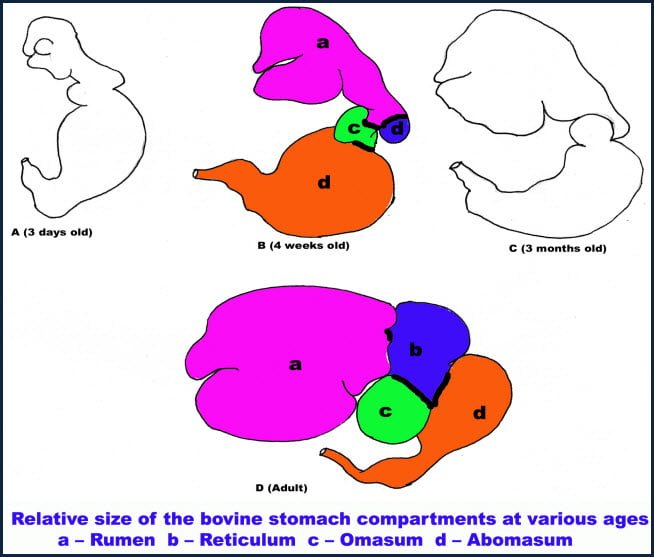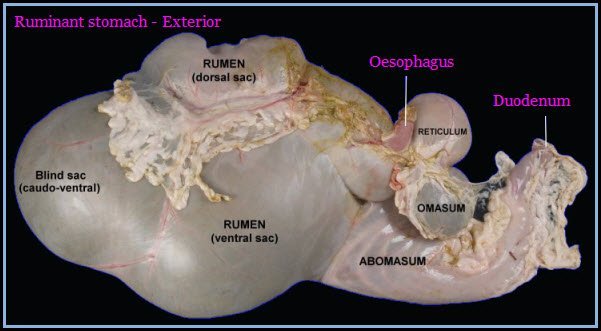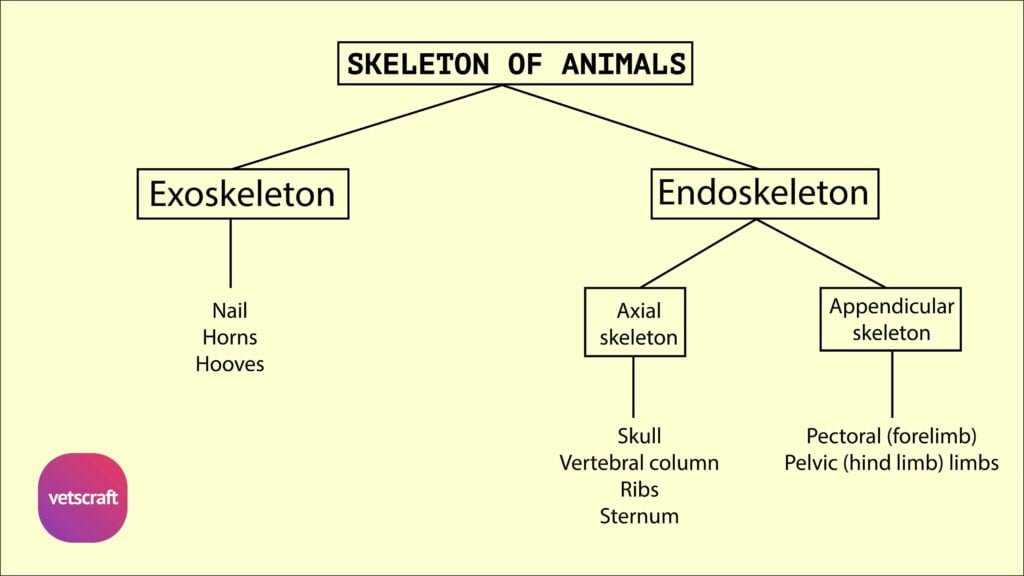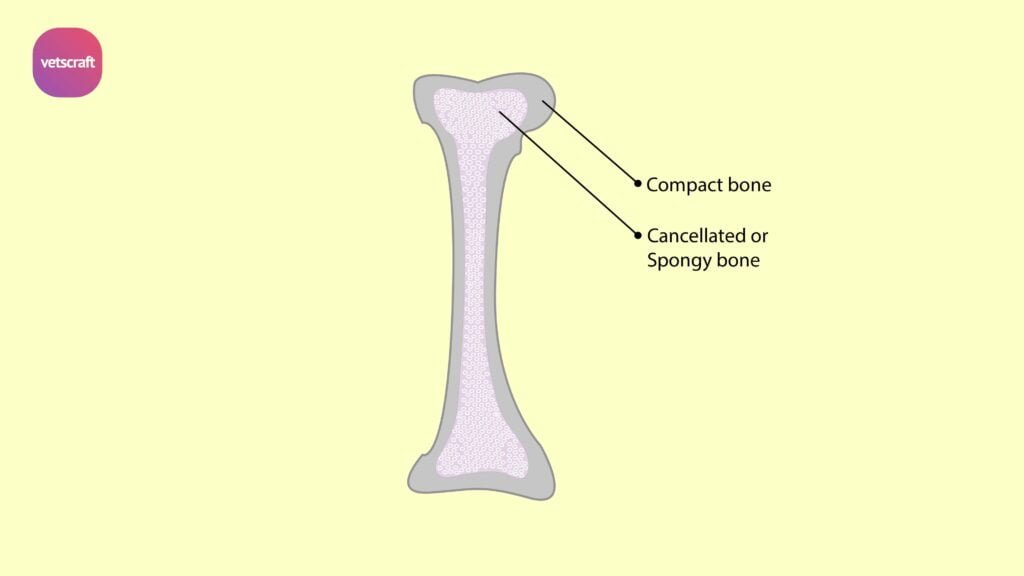TABLE OF CONTENTS
Exterior of Ruminant Stomach of Ox
Exterior of Ruminant Stomach of Ox is very large and occupies nearly three-fourth of the abdominal cavity. It completely fills up the left of the abdomen except for a space intended for the spleen and extends considerably into the right half.
Exterior of Ruminant Stomach of Ox has four compartments-
- Rumen (paunch)
- Reticulum (honeycomb)
- Omasum (many folds, many plies or psalterium) and
- Abomasum, (rennet or true stomach). The division is indicated by grooves

Capacity of Ruminant Stomach
- Varies according to the age, size, breed, etc. Medium size is 30 or 40 gallons
- In the new born the first and second are about half of the fourth. At 10 to 12 weeks the ratio is reversed
- At four months rumen and reticulum are 4 times as large as other two compartments
- At 1 1/2 years omasum equals abomasum, rumen 80%, reticulum 5%, Omasum 7 to 8%, abomasum 8 or 7% (In adult)

Rumen
- The rumen occupies most of the left half of the abdomen and extends considerably over the median plane to the right
- It extends from the lower part of the 7th or 8th inter costal space to the pelvic inlet
- It is slightly compressed laterally and presents two surfaces, two borders and two extremities
- The parietal surface is convex and is related to the diaphragm, left wall of abdomen and spleen
- The visceral surface is irregular and is related to the omasum, abomasum, intestine, liver, pancreas, left kidney, adrenal, aorta and caudal vena cava
- The dorsal curvature is convex and is in contact with the dorsal wall and attached to it by peritoneum and connective tissue as far back as fourth lumbar vertebra
- The ventral curvature is also convex and is related to the floor of the abdominal cavity
- The two surfaces are marked by right and left longitudinal grooves dividing it into dorsal and ventral sacs
- The cranial extremity is divided ventrally by a transverse groove into two sacs – dorsal and ventral, of which the dorsal one becomes continuous with the reticulum, curves over the ventral sac, which is rounded and blind
- The junction of the dorsal sac and reticulum is marked by a groove, the rumino reticular groove that is distinct ventrally, the two compartments form a sort of dome – the atrium ventriculi on which the oesophagus terminates
- The caudal extremity extends to the pubis and is related to the intestine and bladder
- It is divided by the deep caudal transverse groove into dorsal and ventral sacs both of which are blind
- The grooves lodge the vessels and nerves of the rumen
Reticulum
- The reticulum is the most cranial and smallest of the four compartments
- It extends from the 6th to the 8th ribs
- The greater part of it is to the left of the median line. It is compressed from before backwards
- The parietal surface faces forwards, convex and lies against the diaphragm and liver
- The visceral surface faces backwards, is flattened and ends dorsally by joining the rumen, the concave line of junction corresponding to the ridge in the interior, forms the lower margin of the rumino-reticular orifice
- The lesser curvature faces to the right and dorsally and is connected with the omasum. The greater curvature faces to the left and is ventral
- The right extremity forms a rounded blind sac (fundus reticuli), which is in contact with the liver, omasum and abomasum and lies opposite to the sixth intercostal space
Omasum
- The abomasum is an elongated sac, which lies on the abdominal floor from the xiphoid cartilage backwards
- The cranial blind end is at the xiphoid region in relation with the reticulum
- The body extends back between the ventral sac of rumen and the omasum and turns to the right behind the omasum
- It is constricted about the middle forming an cranial larger part and a caudal pear shaped smaller part
- The pyloric part inclines dorsally and joins the duodenum at the ventral part of the 10th rib
- The parietal surface is in contact with the abdominal floor. The visceral surface is related to the rumen and omasum
- The greater curvature gives attachment to the superficial part of the greater omentum
- The lesser curvature is related to the greater curvature of the omasum
Abomasum
- The abomasum is an elongated sac, which lies on the abdominal floor from the xiphoid cartilage backwards
- The cranial blind end is at the xiphoid region in relation with the reticulum
- The body extends back between the ventral sac of rumen and the omasum and turns to the right behind the omasum
- It is constricted about the middle forming an cranial larger part and a caudal pear shaped smaller part
- The pyloric part inclines dorsally and joins the duodenum at the ventral part of the 10th rib
- The parietal surface is in contact with the abdominal floor. The visceral surface is related to the rumen and omasum
- The greater curvature gives attachment to the superficial part of the greater omentum
- The lesser curvature is related to the greater curvature of the omasum

